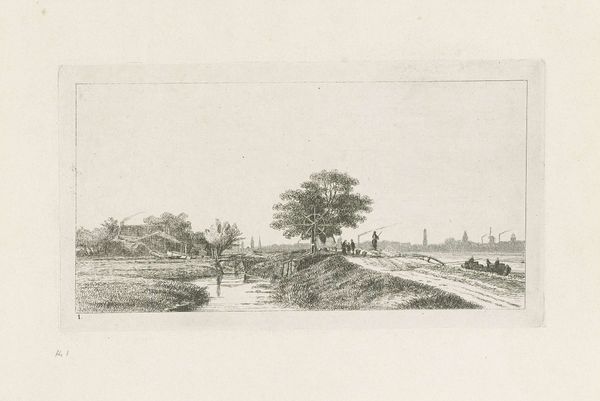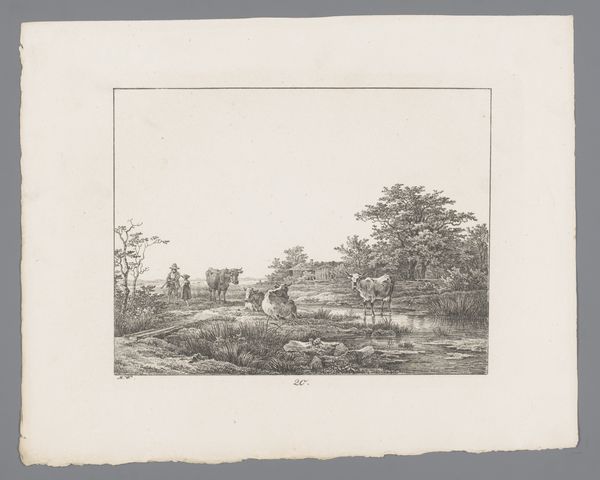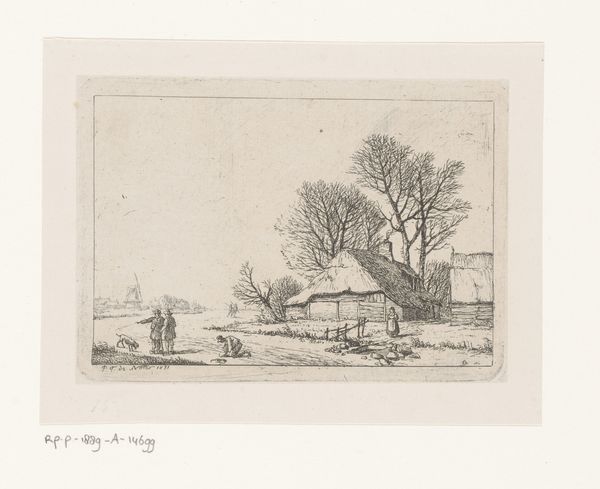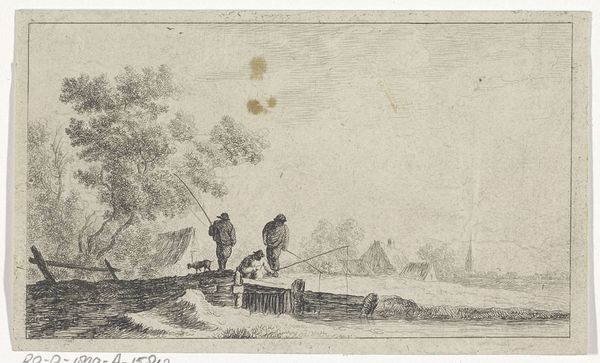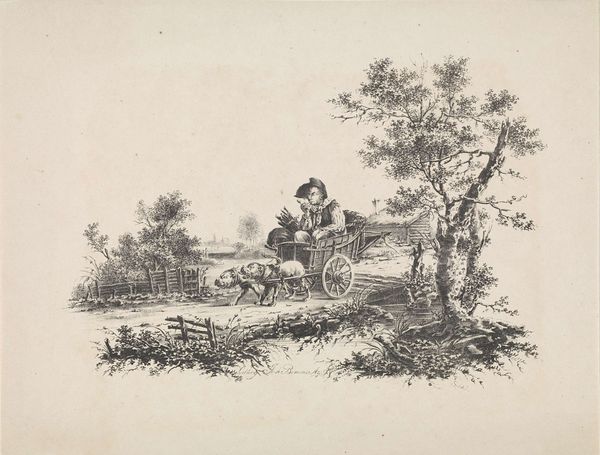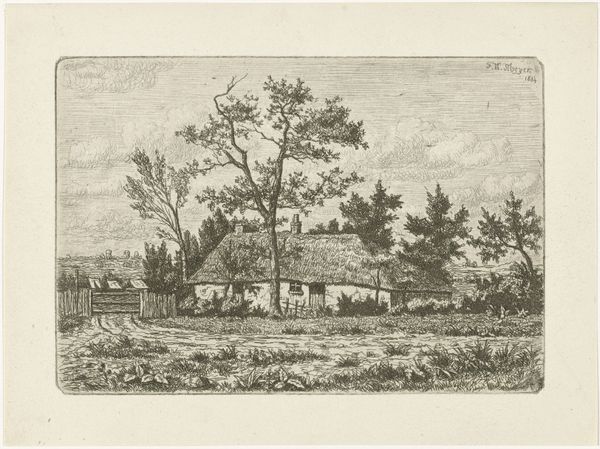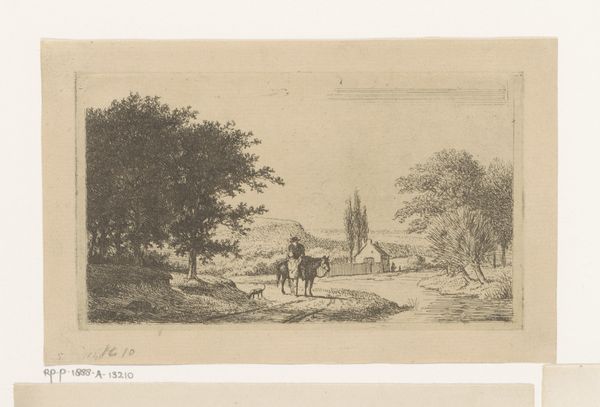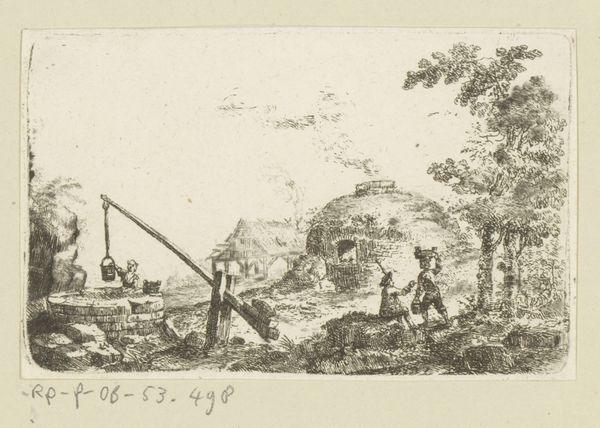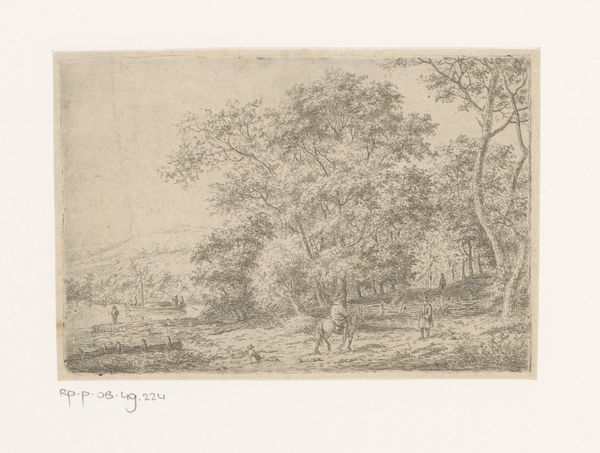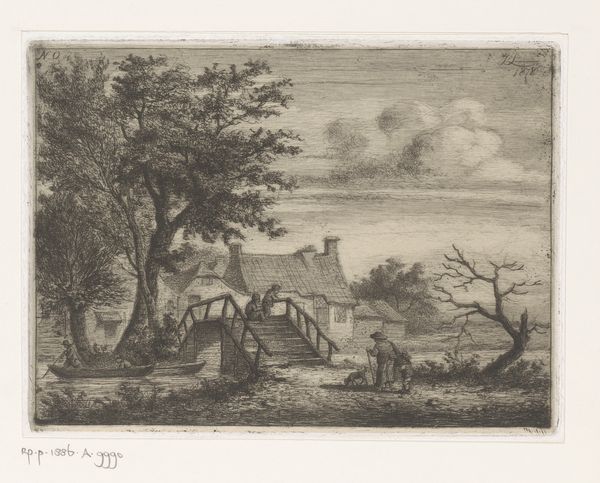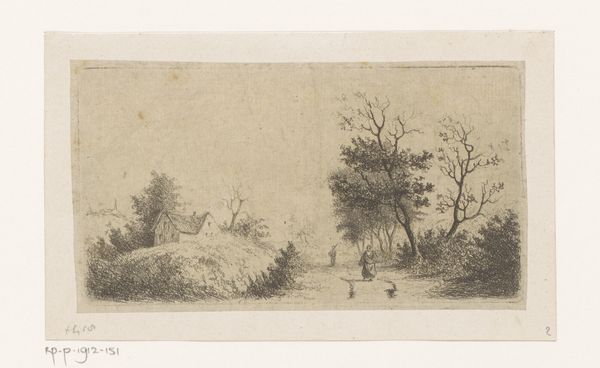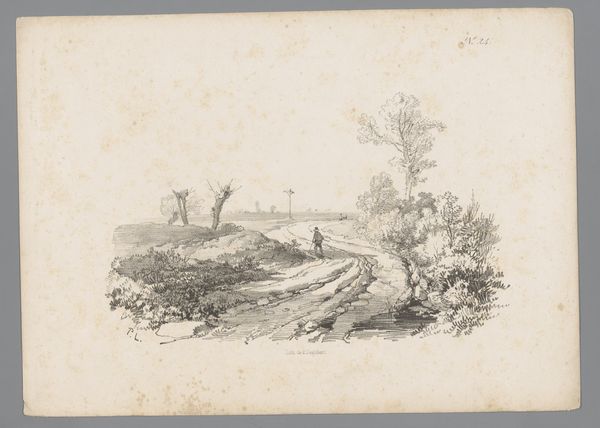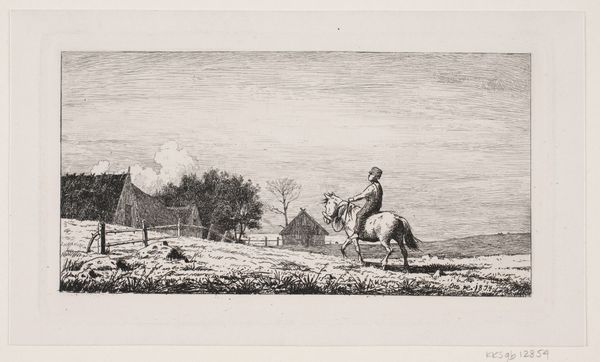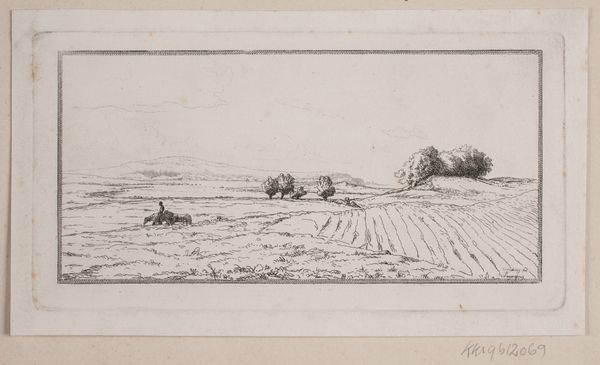
drawing, print
#
drawing
# print
#
landscape
#
realism
#
monochrome
Dimensions: height 75 mm, width 144 mm
Copyright: Rijks Museum: Open Domain
Jean Théodore Joseph Linnig created this small etching, titled *Landschap met een houten brug bij Ekeren*, sometime in the mid-19th century. The scene depicts a solitary figure crossing a rustic bridge in the Flemish countryside. Produced in Belgium, this artwork reflects the period's fascination with rural life, one that romanticized the countryside as a retreat from urban industrialization. The etching technique itself, with its detailed lines and tonal range, was undergoing a revival in the 19th century, becoming a popular medium for landscape artists seeking to capture the subtleties of light and texture. The bridge and fences, rendered with careful precision, highlight the relationship between humans and their environment. To fully understand this image, one could investigate the history of printmaking institutions or consider the economic conditions that enabled artists like Linnig to thrive. It reminds us that art is always embedded in a specific social and institutional context, and its meaning is contingent on how we approach it.
Comments
No comments
Be the first to comment and join the conversation on the ultimate creative platform.
